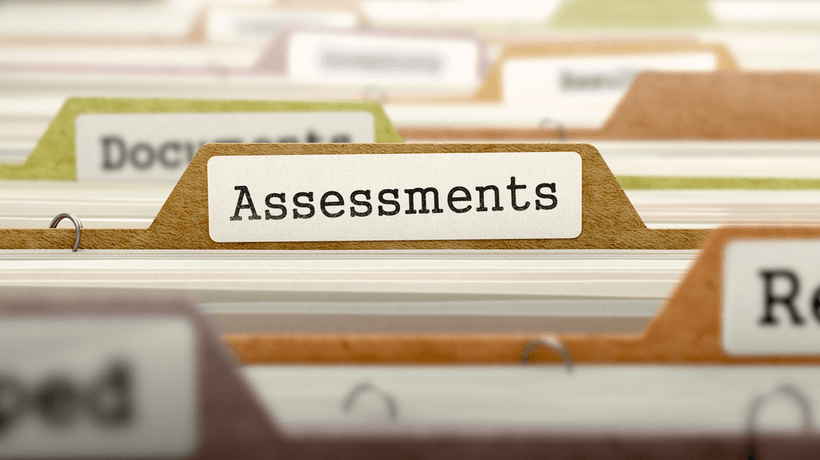Accurate Assessments With Integrity
Assessment is important because we need to know what our students are learning.
Dylan Wiliams stated, “Assessment is the bridge between teaching and learning—it is only through assessment that we can find out whether what has happened in the classroom has produced the learning we intended (2011, p. 1)."
Assessments give educators our action items, just as assessment ought to provide students their next steps. As a critical intersection between teaching and learning, assessment is a data-rich intersection that informs teaching efficacy and exam design. Because it is important to gather accurate measurements regarding student learning, upholding assessment with integrity is of utmost importance to student learning outcomes.
Offering a variety of high- and low-stakes assessments that test different components of learning and support a diverse range of learning styles ensures accurate insights. Multiple-choice, short-answer and long-answer formats each have their merits as well as shortcomings; for instance, while multiple-choice tests make it challenging to assess higher-order thinking, it is a way to test a broad scope of concepts in a shorter amount of time. And long-answer formats, in contrast, are excellent at testing a deep understanding of concepts.
Upholding academic integrity via a culture of academic integrity within your classroom is of course also a critical component of accurate assessment. Ensuring that students’ answers are their own and removing the cloud of suspicion from assessment promotes more positive feedback loops.
Information Gained From Accurate Assessments
Let’s take a look at the information gained from accurate assessments:
For teachers:
- Student learning insights and any knowledge gaps
- Exam design efficacy
- Teaching efficacy
- Academic integrity
For students:
- Feedback to bolster student learning gaps
- Encouragement and validation on what students have done well
- Next steps so that students feel seen and are mitigated from misconduct
There is an amazing amount of data and insights exchanged within this intersection. And it’s important to note that assessment is not an endpoint but a junction within the student learning journey.
Educators offer students timely, actionable, and specific feedback throughout the educational journey. In asynchronous learning situations, students ought to have access to real-time feedback that helps facilitate their learning, whether it be writing, problem-solving, or researching concepts. And feedback after an assessment ought to be centered around student workflows so that not only do exams test what is taught, but timely feedback loops nurture student growth.
At the same time, item analysis can be useful for instructors to gain insights into teaching efficacy [1] as well as exam design. Thus, summative assessments needn’t be void of learning and can still be useful for future student cohorts.
What Can Educators Do To Apply The Data From Quality Assessment Toward Student Learning And Curriculum Development?
Item analysis is useful for all parties involved, particularly in the realm of formative assessment where adjustments in teaching curriculum and exam design can have immediate and positive impacts on student learning outcomes.
If, for instance, students across the board struggled on a particular question or topic in an assessment, then there is an opportunity for the instructor to circle back to students and address this particular gap in learning. Likewise, this scenario presents the instructor an opportunity to examine the question itself and perhaps clarify the exam question. In doing so, assessment and subsequent item analysis can bolster student learning and help students feel seen, which contributes to a sense of belonging. A sense of belonging helps mitigate academic misconduct because a low sense of belonging results in delinquent behaviors, such as cheating.
Furthermore, item analysis can highlight academic misconduct. Westpoint, the US Military Academy in New York, itself became embroiled in a cheating scandal [2] when instructors conducted item analysis [3] and determined that “[72 cadets] all made the same error on a portion of the exam.”
Assessments, as we’ve stated, should accurately measure student learning. When assessment does so, educators have access to rich data to inform teaching and learning. Often, the term “academic integrity” refers to the original thinking and ideas of students. But in the realm of assessment with integrity, accurate assessment is also a joint venture between students and instructors. By ensuring tests measure what is taught, are inclusive, are a point of communication, and are a catalyst for change, assessments support student learning outcomes as well as mitigate academic misconduct. In sum, assessment with integrity occurs when assessments transform into learning.
References:
[1] How To Conduct Learning Data Analysis To Draw Meaningful Insights
[2] Backlash Over Leniency at West Point After 73 Cadets Are Accused of Cheating
[3] West Point accuses more than 70 cadets of cheating in worst academic scandal in nearly 45 years









